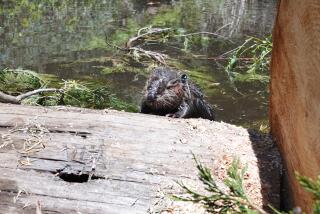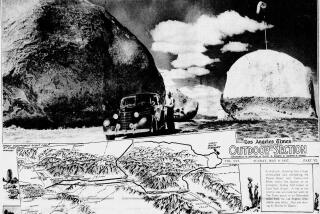Oregon’s Wallowas: Witness the sad, familar story of Chief Joseph and the Nez Perce Indians
Before Lewis and Clark, Oregon Trail ruts, loggers or cattle ranches appeared, the peaceful and powerful Nez Perce, or Nee-Me-Poo (meaning the real people), called the Wallowas home.
Theirs is a familiar, sad story of the West. Discovery of gold led to broken treaties and a forced exodus to a reservation in 1877. Nearly 750 Nez Perce took a 1,170-mile evasive walk instead, pausing to fight the U.S. Army at their heels, before being captured about 40 miles from Canada.
Chief Joseph, namesake of the town in the Wallowas, promised to “fight no more forever.” He was never allowed to return to Oregon.
In 1997, the Nez Perce regained some of their land when they purchased more than 10,000 acres near Joseph Creek; it’s now managed as a wildlife refuge. Most Nez Perce today live on reservations in Idaho and Washington state.
The Wallowa Band of the Nez Perce has a small interpretive center you can visit (209 2nd St., Wallowa; [541] 886-3101, www.wallowanezperce.org. Open noon to 4 p.m. Mondays through Fridays). The grave of Chief Joseph’s father, also named Joseph, overlooks the northern end of Wallowa Lake. Perhaps the most moving experience, however, is retracing the Nez Perce’s final footsteps in Oregon.
From Imnaha, follow the Nee-Me-Poo Trail, 2.6 miles from town on the Cow Creek Bridge road, up to Lone Pine Saddle with big gorge views. Then drive on 14 miles of gravel roads to the Dug Bar on the Snake River, a few hundred yards from the spot where Chief Joseph left Oregon for good.
You can also follow much of the walk from Oregon to Montana along the eight-part auto tour of the Nez Perce National Historic Trail (www.fs.usda.gov/npnht).
ALSO:
Where to get the best beer in Eastern Oregon
Weekend Escape: Avila Beach makes for a relaxing Central Coast getaway
Craft distilleries put down roots in San Luis Obispo wine country
More to Read
Sign up for The Wild
We’ll help you find the best places to hike, bike and run, as well as the perfect silent spots for meditation and yoga.
You may occasionally receive promotional content from the Los Angeles Times.






